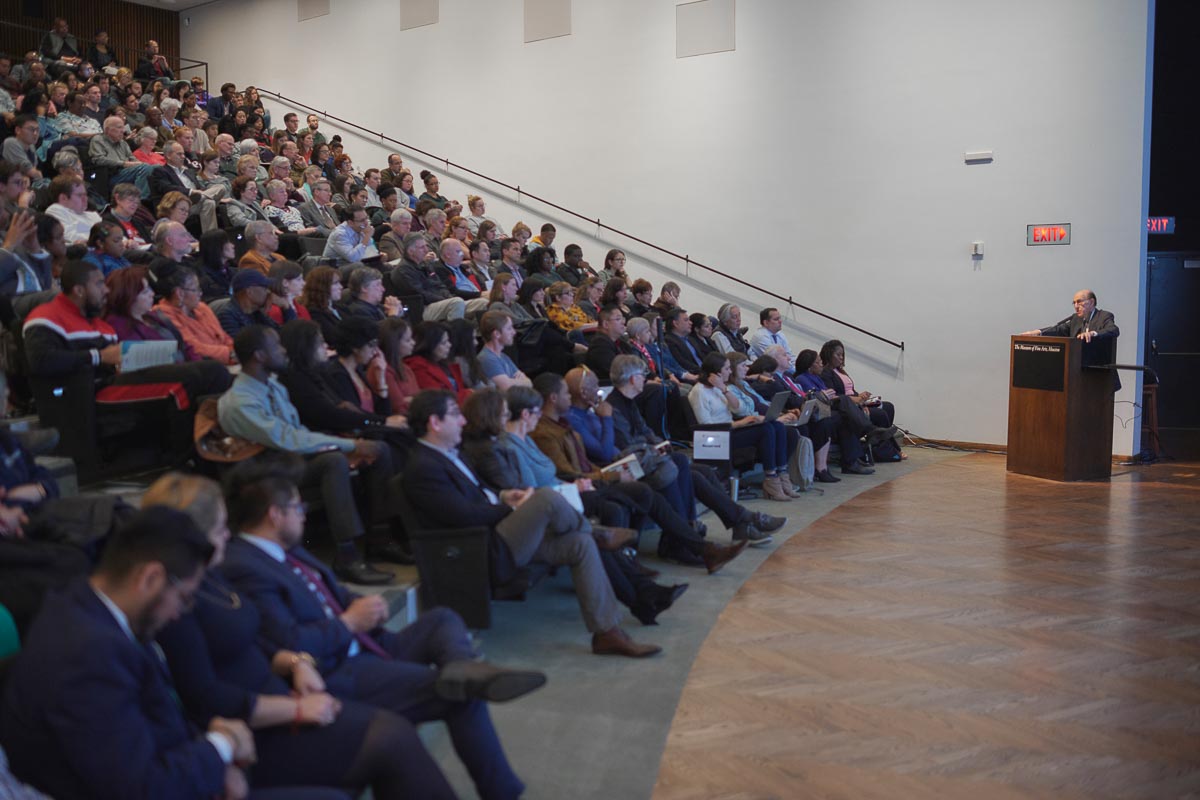Though Levittown often gets recognition as one of the first government-backed developments of the postwar segregated suburban landscape in this country, the first was actually Houston's Oak Forest, Frank Sharp's largest development prior to Sharpstown. The development, which grew to 5,000 homes and was eventually annexed by the city, was "marketed to returning veterans and offered small, economical ranch houses," according to the Houston History magazine. Amid a crunch for more housing after the war, two government agencies, the Federal Housing Administration and Veteran's Administration, backed such developments and loans. But the government support came with a stipulation: the homes could not be sold to African Americans.
Indeed, writes Richard Rothstein in his recent Color of Law: A Forgotten History of How Government Segregated America, "The FHA had its biggest impact of segregation, not in its discriminatory evaluations of individual mortgage applicants, but in its financing of entire subdivisions, in many cases entire suburbs, as racially exclusive white enclaves."
Sold for a fraction of their value today, the homes in these developments became a vehicle for white wealth accumulation. Today, as Rothstein argued in a Kinder Institute Forum lecture Wednesday, while the average black income is about 60 percent of the average white income, white families have roughly 10 times as much wealth as black families.
This government mandated segregation was just one of several policies crafted over the 20th century at the federal, state and local level that created and reproduced residential segregation across the country. And while the civil rights movement of the 1960s effectively ended discrimination across a range of public accommodations, Rothstein argued that it fell short when it came to housing. Instead, the legacies of old policies as well as new ones worked to perpetuate the residential divides that overlap with a variety of disadvantage, from health disparities, school segregation and more. "The segregation we have created is responsible for the most serious social problems we face in this country," said Rothstein.
While some of the policies came at the federal level, there are countless local examples that reinforce this pattern of inequality, including in Houston, where a 1920s plan called for "Race Restriction Areas." Though the map was never made official, because officials saw similar efforts rebuffed elsewhere, its intentions were supported by the local school board. At the time, as Rothstein notes in his book, many Houston neighborhoods were more integrated than they would soon become. "Over one-fourth of African American children lived in a school attendance district that was at least 70 percent white," he writes. But as the school district, in following with the city's unofficial plan, built new schools for white children on the west side of town and diverted resources for black schools to a new school south of town, the original Jack Yates Senior High School, to concentrate black residents in the Third Ward neighborhood. The school board, Rothstein continues, closed or financially starved black schools on the west side and, in addition to pushing black families to Third Ward, built new schools for black children on the northeast side of town as well. "Each time the board made a decision about schools for African American pupils," writes Rothstein, "a chief consideration was avoiding 'proximity to white districts.'"
Through these mutually reinforcing levels of policy, Rothstein explains how the government on all levels not only enforced segregation but often created it in places that had not previously known it. Public housing built during World War II, for example, often introduced segregated projects into booming area's that were relatively integrated before the arrival of scores of workers and their families, sorted into race-specific public housing. There were also countless instances of state-supported violence to make sure that racially restrictive covenants were not ignored at the individual level.
The story of white flight and the concentration of poverty in urban areas is a familiar one today. The effects of redlining are increasingly part of the national dialogue such that presidential hopeful Senator Elizabeth Warren has outlined a proposal to create a fund for down payment assistance for residents of previously redlined communities, an indirect way to get at the wealth disparities created by policies that undervalued black communities and propped up the values of white enclaves.
"I think it's a good start," Rothstein said Wednesday of the proposal. "The remedies to this are easy to develop." What's harder to find, though, is the political will. Rothstein said he worries that as the country faces an affordable housing shortage, the policy solution will focus simply on supply and not on what he argues is a critical need to desegregate housing.
"The civil rights movement decided and the country agreed for the most part that segregation was wrong," he said, "that it was immoral, that it was harmful to both African Americans and whites...how could it be that we left untouched the biggest segregation of all?"
Beyond addressing the overlapping nature of compounding disadvantage at the neighborhood-level, such remedies are required, argued Rothstein, because segregation was, rather than a simple product of private choices and bigotry, a largely government-created phenomenon and as such, a violation of the Constitution.
"We’ve adopted a national myth - a rationalization that excuses ourselves from addressing the last remaining and the biggest form of segregation," Rothstein said. "We’ve never really dealt with the legacies of slavery in this country."

